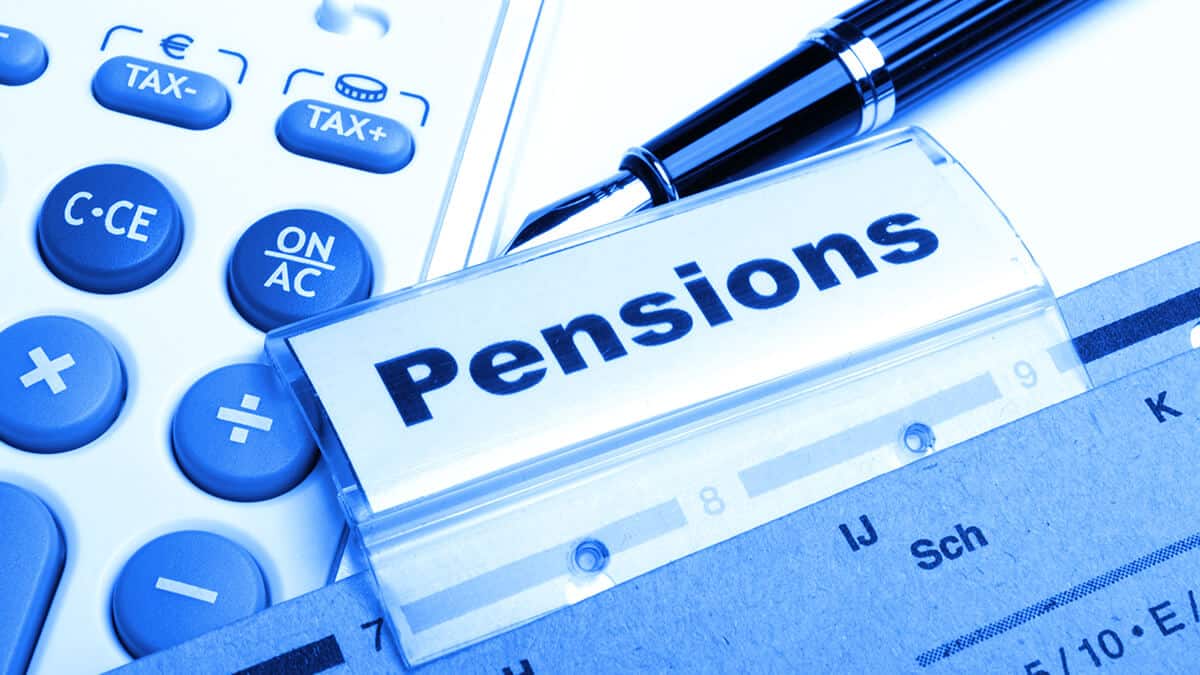In this guide
In the reams of reporting and commentary on superannuation, the focus is mostly on building your retirement balance. Historically, relatively little attention has been given to what happens next in the retirement phase.
Many super funds have been working behind the scenes to improve their retirement income products. Some have also developed annuity-style products that provide income for life or for a set period to address members’ fears about their money running out due to longevity, inflation and investment risks.
But innovation in this area has been disappointingly slow, three years after the release of the retirement income covenant (RIC).
It was generally anticipated that the RIC would lead to a flurry of new pension products but, for various reasons, this has not been the case.
Instead, funds have been tinkering around the edges of their existing account-based pension products, focusing on more flexible, convenient access to retirement savings, developing retirement calculators and other digital resources, and improving communication with members in the lead up to retirement and in retirement phase. But even these efforts have slowed.
More flexible super pensions
In an April 2025 survey of pension funds, SuperRatings found only a small number of funds have launched new retirement products in the last couple of years.

Free eBook
Retirement planning for beginners
Our easy-to-follow guide walks you through the fundamentals, giving you the confidence to start your own retirement plans.
"*" indicates required fields
In recent years there has been a major shift towards more flexibility around pension payment set up, frequency and payment date options, but this too has stalled.
“Historically, some of the more innovative solutions were being offered by smaller funds that are now merging, resulting in a decline in pension flexibility over the short term. We expect this will rise again as funds launch new products or expand the options available within existing products,” says SuperRatings Insights manager Joshua Lowen.
Traditionally, funds have offered payments from their account-based retirement pension products monthly, quarterly, twice a year or annually. But the trend has been towards fortnightly payments.
Lowen says the latest survey found that as of June 2024:
- 86% of funds now offer fortnightly payments, up from 72% in 2023
- 7% of funds offer weekly payments, up from 5%
- All funds offer monthly or annual payments
- 98% of funds allow quarterly payments
- 95% allow half-yearly payments.
More frequent pension payments allow fund members to better manage their cash flow, especially those members who also receive a full or part Age Pension. As the Age Pension is paid fortnightly, retirees could opt to receive their super pension payments on alternate weeks.
Technology is also helping to cut red tape and response times.
- 55% of pension funds enable people to open a pension account online, up from 47%
- 68% of pension funds allow partial withdrawals online (that is, occasional lump sum withdrawals in addition to regular pension payments), up from 55%.
Improvements in digital functionality have also reduced the time members can expect to wait to access their savings. Most funds (57%, up from 52%) now provide access to savings in two to three days, while 13% offer access within one day (down from 23%).
Automatic increases to pension payments
Another development SuperRatings looks at is funds that allow members to set up automatic increases in their pension payment amount. For instance, to keep up with rises in the cost of living you might decide to increase your pension payment by a set percentage amount each year or by an amount in line with inflation.
2026 SMSF calendar
Our free calendar includes due dates for important documents plus suggested dates for trustee meetings and other strategic issues for your SMSF.
"*" indicates required fields
SuperRatings found that:
- 71% of funds allow members to increase their pension payment by a nominated percent each year, up from 69%
- 75% allow members to increase their payments by rises in the Consumer Price Index (CPI, a measure of inflation), a steep fall from 86% a year earlier.
This function is particularly important when inflation is rising sharply, as it was in 2023–24, to cover the rising cost of living. Which makes it especially disappointing that some funds have chosen to stop offering automatic CPI annual payment increases.
Retirement bonuses
Some funds also offer some sort of ‘retirement bonus’ as an incentive for members to stick with them as they transfer money from accumulation phase into retirement phase.
Retirement bonus payments go by various names, such as pension bonus or Australian Super’s Balance Booster. It may be called a bonus, but it’s essentially your own money.
SuperRatings found a slight increase in the number of funds offering a retirement bonus to 29% of pension funds as of June 2024, up from 28% the year before.
Some funds pay a flat percentage of your retirement balance, while others use a more complex calculation based on your length of membership or the investment options you were in.
Lowen says retirement bonus caps haven’t changed materially over the year. Most are capped at $4,000–5,000 although some caps are as high as $8,000. AustralianSuper says on its website that the average bonus it pays is $2,600.
Average pension balance rising
While it’s undoubtedly the case that there has been too much focus on super balances and too little on retirement income, balances do matter.

Free eBook
How to maximise your Age Pension
Learn tips that help you make the most of the Age Pension so your retirement savings last longer.
"*" indicates required fields
Following the strong market recovery since the pandemic low in March 2020 until February 2025, SuperRatings found that the average super pension balance was sitting at around $335,000 in June 2024. This is up from $308,000 the previous year. Average new pension balances rose even more, to $370,000 from $329,000 previously.
Returns were better than expected in the year to June 2024, with the median Balanced pension fund (60–76% growth assets) up almost 10%.
In difficult years it’s worth remembering that super is a long-term investment, even in retirement phase. In the ten years to June 2024, the median Balanced pension option returned close to 8% per year on average.
Yet retirees often choose to withdraw the minimum amount required under super legislation, set at 4% of your account balance if you are aged 60 to 64 and 5% from age 65 to 74, then rising incrementally to 14% from age 95.
In other words, most retirees would have seen their pension account balance grow in recent years even after withdrawing a year’s pension income.
Lump sum vs pension payments
SuperRatings’ survey found 60% of members elected to receive a lump sum benefit as at July 2024, compared with 40% who started a super pension. This is a significant improvement on the figures of 71% and 29% respectively only three years earlier.
The proportion of retirees opting to withdraw their super as a pension should continue to increase as balances rise, as many of today’s retirees have not had the benefit of compulsory employer-paid super for their entire working lives. Better retirement income products and services for retiring members should also help.
As retirement balances increase, member retention is increasingly important for funds. Many funds are using digital technology to improve member engagement as members approach retirement, with tailored communications about retirement options and advice on offer.
Manage your retirement savings with confidence – for free

Get practical guidance from independent experts to help you make the most of your finances in retirement with a free SuperGuide account.
Find out moreLowen says funds have a complex task in educating and guiding members through their retirement. “Regulatory certainty around what advice can be given will be required before funds can fully support members.” This is getting closer as the government’s Advice through Superannuation proposed legislation moves through the consultation process.
Fees down slightly
While pension account starting balances are on the rise, it’s important not to become complacent. When your financial resources in retirement are finite, every dollar counts. One factor that can be a potential drag on returns is fees.
The good news is that median fees have fallen a bit, but there is still a big gap between the highest and lowest fees on the market.
The table below from the latest SuperRatings survey summarises fees for Capital Stable options (20–40% growth assets) across the main pension products in the market, using an account balance of $125,000. The top quartile indicates the cheapest 25% of funds, the bottom quartile is the cut-off for the most expensive 25% of funds, and the median represents funds that sit at the halfway mark in terms of fees, that is, half of all funds surveyed are more expensive and half are less expensive.
Pension fees on a $125K account balance – Capital Stable options
| Annual fee as a % of $125k balance | Total | Member fee | Percentage-based administration fee | Investment-related fees and costs | |
|---|---|---|---|---|---|
| Top quartile | 0.70% | $877 | $0 | 0.16% | 0.42% |
| Median | 0.93% | $1,162 | $64 | 0.21% | 0.62% |
| Bottom quartile | 1.29% | $1,614 | $150 | 0.37% | 0.80% |
*Fees used in the analysis are as at 31 March 2025 using most recent data available to SuperRatings at the time of preparation. Fees include percentage-based administration fees, member fees, investment management fees (including performance-based fees), transaction fees and costs, and taxes but exclude any applicable employer rebates.
As you can see, the most expensive funds charge $1,614 or more compared to $877 or less for the least expensive funds in the market, a difference of $737. Lowen says there has been a small decrease in fees overall, mostly due to lower transaction costs.
However, he says funds have been under a lot of cost pressures which has limited their ability to lower fees, and regulators won’t let them raise fees.

Free eBook
Beginners guide to the Age Pension
Learn how the Age Pension is assessed, and how to apply.
"*" indicates required fields
The bottom line
Overall, there hasn’t been much change in the retirement phase over the past year. As SuperRatings’ Joshua Lowen explains: “Take up of lifetime-income-style accounts remains very low and funds have shifted focus away from building new retirement products toward supporting members in understanding the retirement journey. However, this remains limited while funds await clarity around the future of advice.”



Leave a Reply
You must be logged in to post a comment.